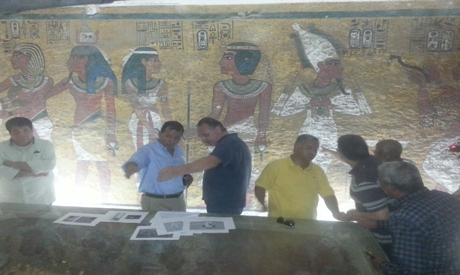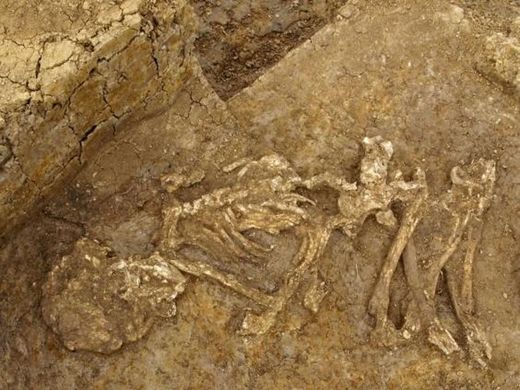
© Nevine El-ArefAntiquities minister Mamdouh Eldamaty (in yellow shirt) during examinations in Tutankhamun tomb.
Antiquities minister Mamdouh Eldamaty announced on Monday that the first examinations carried out by himself and British archeologist Nicholas Reeves in Luxor on Tutankhamun's tomb have
revealed that the tomb's northern and western walls both hide chambers.There are scratching and markings on both walls like those found on the entrance gate of Tutankhamun's tomb when it was discovered in 1922, Eldamaty explained.
"This indicates that the western and northern walls of Tutankhamun's tomb could hide two burial chambers," Eldamaty told Ahram Online.
Nicholas Reeves said their investigations showed the tomb's ceiling extends behind the northern and western walls. He is now almost convinced his theory suggesting the existence of two undiscovered chambers is correct.
"After our first examination of the walls we can do nothing more until we receive the all-clear from the radar device to confirm the our findings," Reeves told Ahram Online.
Eldamaty has promised that on 4 November, the same day Tutankhamun's tomb was discovered, the radar results of scans on the two walls will be announced.


Comment: